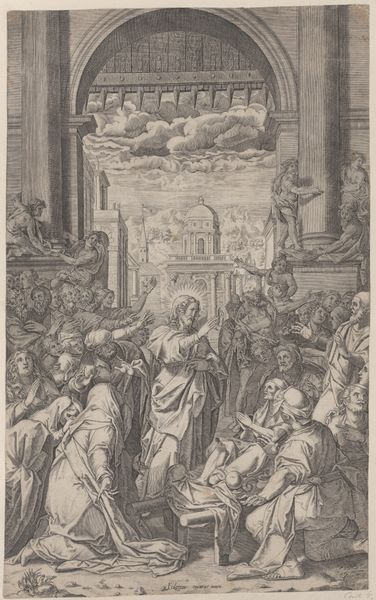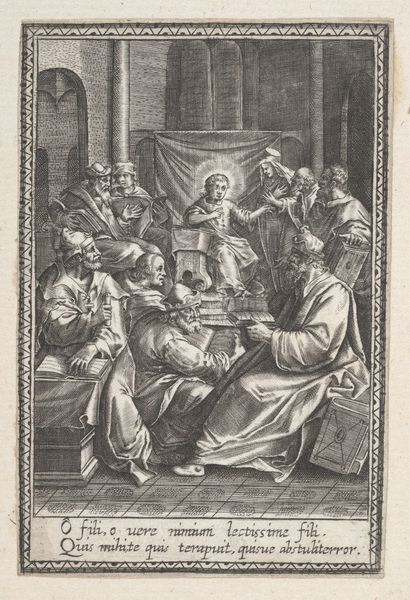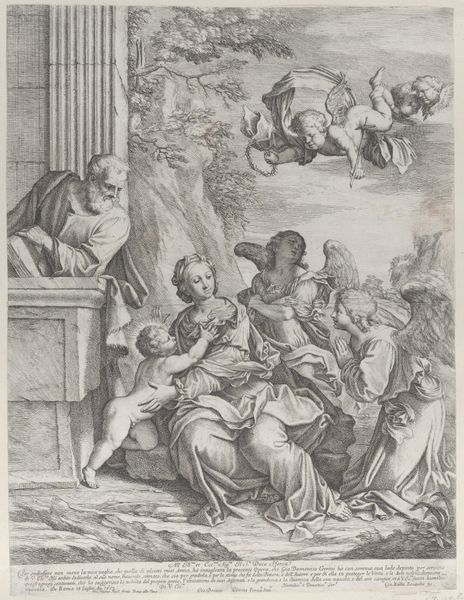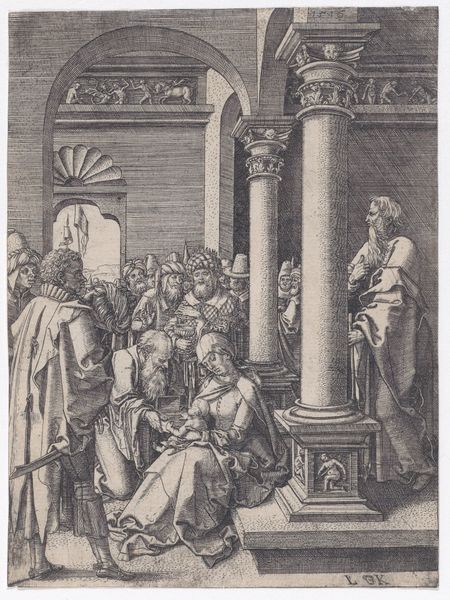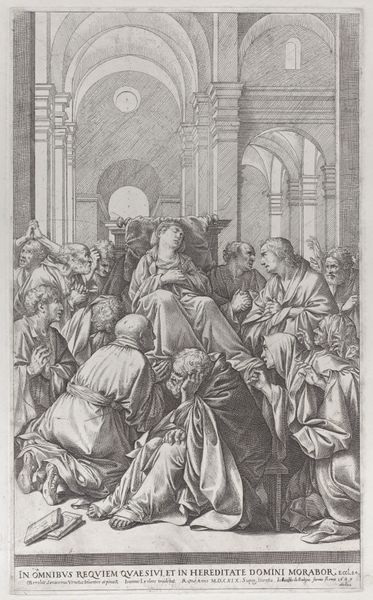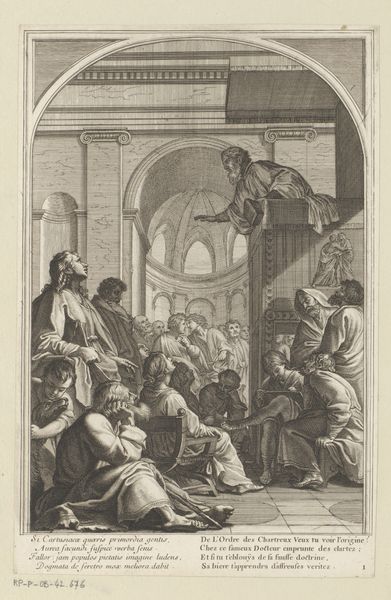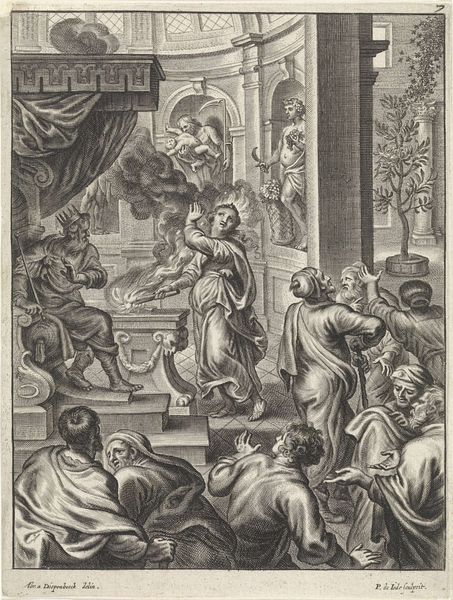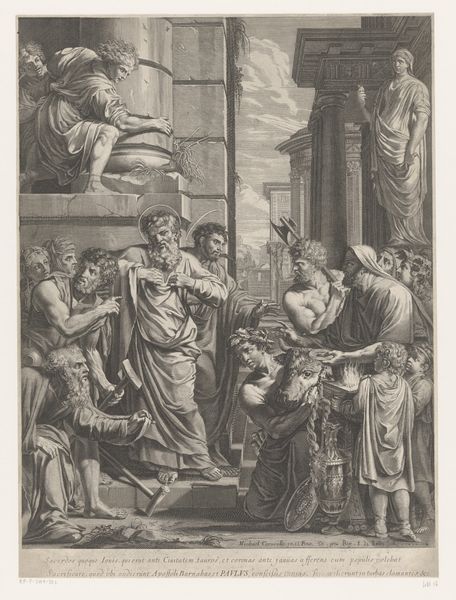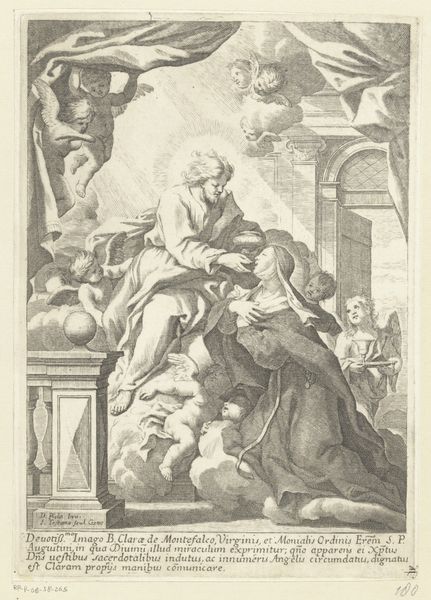
The presentation of the Virgin in the Temple 1670 - 1680
0:00
0:00
drawing, print, engraving
#
drawing
#
narrative-art
#
baroque
# print
#
figuration
#
history-painting
#
engraving
Dimensions: Sheet (Trimmed): 18 7/16 × 10 7/8 in. (46.9 × 27.6 cm)
Copyright: Public Domain
Christoph Lederwasch created this engraving, "The Presentation of the Virgin in the Temple," sometime between 1670 and 1705. The work depicts a young Mary being presented to the temple, a popular subject in Baroque art that signifies devotion and religious instruction. Made in the Holy Roman Empire, this print reflects the Catholic Church's continued influence in the region. Lederwasch's choice of subject matter and his technical skill speak to the powerful patronage system of the era. The detailed depiction of the temple, the clothing of the figures, and the expressive faces all contribute to the image's meaning. It’s worth considering how the institutional church cultivated artists, and what that meant for artistic expression at the time. To fully understand this work, you might investigate the culture of the Holy Roman Empire, especially the religious environment. Archival records of Lederwasch's patrons might also reveal the purpose behind the creation and dissemination of prints like these. By studying the social and institutional context, we can better grasp its significance.
Comments
No comments
Be the first to comment and join the conversation on the ultimate creative platform.

